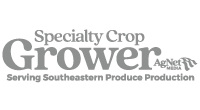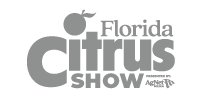By Megan Dewdney Spring is the time to start thinking about foliar disease management in Florida. Depending on the type of citrus being produced and the market destination, different diseases will be important. POSTBLOOM FRUIT DROP The disease that affects all citrus, particularly oranges, is postbloom fruit drop (PFD). This disease is highly dependent on the weather during bloom. Currently, …
When to Apply Brassinosteroids to Improve Valencia Fruit Quality
By Fernando Alferez and Divya Aryal Like the work being done with Hamlin sweet orange, University of Florida Institute of Food and Agricultural Sciences (UF/IFAS) researchers are studying the effect of brassinosteroids (BRs) on the internal maturation of Valencia sweet orange fruits. The conditions of the treatments are the same as in Hamlin: A treatment of 186 milliliters of BR …
Strategies for Managing Herbicide Tolerance
By Ramdas Kanissery Tackling herbicide tolerance in weeds is a critical aspect of effective weed control in citrus groves. It helps prevent both current and future weed management challenges. Herbicide tolerance occurs when certain weed species naturally survive and reproduce after herbicide treatment. Unlike herbicide resistance, where genetic changes allow weeds to survive and spread, herbicide tolerance doesn’t involve any …
Rejuvenate HLB Trees With Precision Nutrient Management
By Meryam Manzoor, Jamie D. Burrow, Taylor Livingston and Tripti Vashisth Effective nutrient management and accurate nutritional analysis are critical for tree growth and maximum yield. Historically, nutrient management for healthy citrus trees involved annual leaf sampling from July to August, with subsequent fertilization plans based on a single nutrient analysis. Almost all commercial citrus groves in Florida are affected …
Oxytetracycline Efficacy Impacted by Exposure to Field Conditions
By Lauren Fessler Mathews, Sanju Kunwar, Ana Redondo and Ozgur Batuman Based on numerous research studies conducted by scientists at the University of Florida Institute of Food and Agricultural Sciences (UF/IFAS), it has been proven that injections of oxytetracycline (OTC) can help to alleviate symptoms caused by huanglongbing (HLB) disease. This treatment is now widely practiced and crucial for preventing …
Combine IPCs and Brassinosteroids to Prolong Young Tree Health
By Fernando Alferez and Saoussen Ben Abdallah The risk of citrus plantings to become infected with HLB is especially high for young trees, which flush frequently and attract more psyllids than mature trees. Individual protective covers (IPCs) are now being increasingly adopted to protect newly planted citrus trees from psyllid colonization. However, even though IPCs effectively protect young trees from …
Plan Your 2025 Pest Management
By Lauren Diepenbrock Pest management is a year-round challenge in Florida citrus. With the warm climate, pests are at the ready as soon as plant resources are available to them. With knowledge of invertebrate biology in relation to tree phenology, growers can develop plans to protect fruit and maintain productive citrus trees. HIGHLY PROBLEMATIC PESTS Populations of some highly problematic …
Two New Early-Season Sweet Oranges for Florida Growers
By Manjul Dutt, Sheetal Ramekar and Gary England Developing new citrus cultivars, whether through conventional breeding or genetic engineering methods like transgenics or CRISPR is potentially the most viable long-term strategy to combat huanglongbing (HLB). Identifying potential survivor trees — citrus trees that exhibit disease tolerance in areas with endemic HLB — can also serve as a useful strategy for …
Controls Needed to Effectively Evaluate Treated Trees
By Ute Albrecht, Gabriel Pugina and Caroline Tardivo Two years have passed since trunk injection of oxytetracycline (OTC) was approved for HLB management in Florida. Many growers have adopted this technology. While most reported positive responses, others did not. The plant physiology team at the University of Florida Institute of Food and Agricultural Sciences (UF/IFAS) Southwest Florida Research and Education …
Fertilizer Considerations for HLB-Affected Citrus
By John M. Chater and Davie Kadyampakeni Soil fertility is a keystone to a productive citrus grove in Florida. In the era of huanglongbing (HLB), the need to fine-tune soil fertility takes on even more importance. The sandy soils found in citrus-growing regions of the state are great for drainage to reduce flooding stress of citrus trees in many cases, …
Improve the Success of Spot Sprays
By Ramdas Kanissery Spot application of post-emergent herbicides provides an effective solution for controlling weeds that are missed by standard maintenance herbicide programs in citrus groves (Figure 1, left). This method is also helpful for targeting weeds in areas that herbicide boom sprayers can’t reach, like those growing near the trees (Figure 1, right). Here are some key tips to …
Improving ACP and HLB Control in Residential Settings
By Romain Exilien and Xavier Martini Residential gardens serve as reservoirs for Asian citrus psyllids (ACP) and citrus greening disease (also known as huanglongbing or HLB) due to unmanaged citrus trees. The University of Florida Institute of Food and Agricultural Sciences (UF/IFAS) conducted a survey to assess residents’ needs regarding ACP and HLB management. The survey examined their current control …
How to Handle Extended Flowering in HLB Trees
By Tripti Vashisth University of Florida Institute of Food and Agricultural Sciences (UF/IFAS) flower bud induction advisories for 2024–25 started on Nov. 25. The advisories will be posted bi-weekly until March 2025. The goal of the advisories is to provide growers and production managers with a complete overview of flowering prediction. Every advisory will aim to deliver recommendations for that …
New Flame Grapefruit Selection Offers Improved HLB Tolerance
By Manjul Dutt, Sheetal Ramekar and Gary England The grapefruit was created by chance from a cross between a pummelo and a sweet orange. It was first discovered in Barbados in the 18th century. All the commercially sold grapefruits today trace their roots back to the Duncan variety of grapefruit. Cultivars existing today were developed through natural and induced mutations …
Apply Brassinosteroids to Improve Hamlin Brix
By Fernando Alferez and Divya Aryal Brassinosteroids (BRs) are a class of plant growth regulators with several effects on plant growth and development. University of Florida Institute of Food and Agricultural Sciences (UF/IFAS) work in the last few years has shown that BR treatments may influence internal maturity in Hamlin sweet orange if performed at the right time. Research has …
Australian Lime Interstocks to Combat HLB
By Ozgur Batuman, Sanju Kunwar and Ana Redondo In a promising effort to protect citrus from huanglongbing (HLB), University of Florida Institute of Food and Agricultural Sciences (UF/IFAS) researchers are exploring the potential of Australian lime as an interstock graft for Valencia scions with Swingle rootstock. The interstock technique uses various limes, known for their natural HLB-tolerant peptides, between the …
How Produce Safety Rule Changes Will Impact Your Operation
By Taylor O’Bannon, Clara Diekman and Michelle Danyluk In July 2024, the Food and Drug Administration (FDA) finalized changes to the Food Safety Modernization Act (FSMA) Produce Safety Rule Subpart E, which covers preharvest agricultural water. Since then, the clock has been ticking on farms’ implementation of the rule changes. Large farms have nine months after the effective date to …
Understanding EPA’s Herbicide Strategy
By Lauren Diepenbrock and Brett Bultemeier There have been a lot of changes within the Environmental Protection Agency (EPA), so much so that it seems there is an update nearly every day! This is because the EPA had to settle a mega lawsuit dealing with endangered species. In the past, the EPA did not directly address endangered species during registration. The …
Reduce Post-Hurricane Fruit Drop With PGRs
By Tripti Vashisth and Taylor Livingston Hurricane Milton passed over many citrus-producing counties in Florida, resulting in canopy and fruit loss (especially in early varieties). HLB-affected trees undergo a lot of stress, and now the hurricane has added more abiotic stress to trees. High-speed winds caused significant fruit and leaf drop. The fruit and leaves that escaped the drop during the …
Plan to Attend the Millennium Block Field Day
By Robin Koestoyo On Nov. 7, citrus growers will join University of Florida Institute of Food and Agricultural Sciences (UF/IFAS) Assistant Professor Flavia Zambon to view new citrus varieties that show tolerance to citrus greening. Zambon will guide visitors at the 2024 Millennium Block Field Day, a walk-through interpreted tour. The Millennium Block is a seminal grapefruit trial on 20 acres …





























